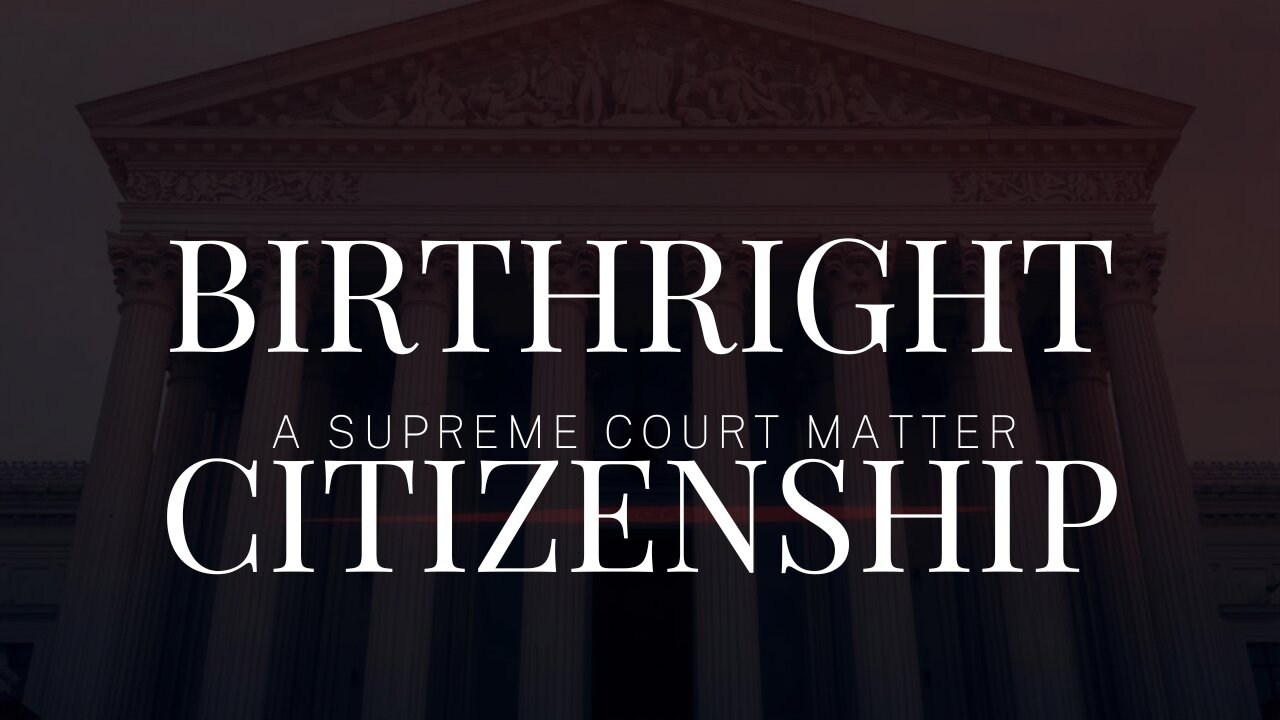As Resurrection Sunday approaches, Dallas Jenkins is premiering his fifth season of his long-running streaming series, The Chosen, in theaters. This theatrical run is, to be sure, limited. Yet last Wednesday (April 2), its first of three installments came in second place overall in gross box-office receipts. The Walt Disney Company’s live-action Snow White remake came in third place, with a wider release! And little wonder. Not only does The Chosen have better source material to work with, but it takes a far more respectful approach. The result is a series of films that build suspense at least as well as does any “thriller” franchise. But besides that, it holds up a mirror to our own society, into which all Americans should look.
The Chosen – Who is He/are they?
The Chosen opened in 2017 in the streaming market, first from Angel Studios. (They are the same distributor that brought us Sound of Freedom.) Writer-Director-Producer Dallas Jenkins (son of Jerry Jenkins of Left Behind fame) films mostly on location in Texas and Utah. Jenkins’ production company (Five and Two Studios) plans seven seasons of eight episodes each. The Chosen finished its fourth season last year, after a considerable delay during which Jenkins found another distributor (Come and See). Anyone can view it on a dedicated “app” available in the Google Play and Apple App Stores. It is also available on the Roku API, which has the largest (over 300,000) inventory of “channels” for streaming boxes and “smart TVs” using that API.
The Chosen is, of course, Jesus Christ, or His Apostles. Thus the series treats the public ministry of Christ, beginning after His Forty-day Temptation in the Desert. Season 1 begins with Mary Magdalene and ends with the Woman at the Well. Season Two ends before the Sermon on the Mount, and Season 3 ends with the Feeding of the Multitude. That last episode also shows Jesus walking on water, rescuing Simon (now called Peter) from the storm-tossed waves, then calming the storm.
Season 4 begins with the most tragic scenes of all thus far, especially the execution of John the Baptist. It continues with an observance of the Feast of Dedication, or Hanukkah. It ends with the resuscitation of Lazarus, and Jesus riding into Jerusalem on a donkey.
The most recent season
Season 4 also set the pattern for future season releases: in theaters, in three installments covering eight episodes. So Season 5 is following that same pattern. The full name of this three-part arrangement is The Chosen: The Last Supper, because the season treats the last week of Jesus’ mortal life. Part One began with Jesus’ entry into Jerusalem, and ended with His expelling the marketers and moneychangers from the Temple. Regular viewers expected an intense scene, and they got one – and perhaps were as surprised to see Jesus reacting in violent anger as His Apostles were.
Part Two continued to the Last Supper of the trilogy’s name – and also to Judas meeting with High Priest Caiaphas. Part Three will show next week, and end with Jesus’ arrest in the Garden of Gethsemane.
Each part of the arrangement will run for one week only, opening on a Thursday and closing next Wednesday. Given that narrow gap, Part One accomplished an incredible feat. According to The Numbers, it finished its one-week run in second place, behind MGM’s A Working Man. It finished comfortably ahead of the Disney Snow White remake. Furthermore, it earned $593 per screen – while Snow White earned only $203 per screen. Over its weekly run, Part One performed as expected from its opener. Snow White has not performed up to expectations.
The Chosen – how it plays
The number of actors who have portrayed Jesus Christ in motion pictures and television is almost too many to count. These portraits have varied from central (like Max Von Sydow in The Greatest Story Ever Told), to brief (see, for example, Ben-Hur, The Robe, and the Hallmark special Give Us Barabbas). Jonathan Roumie shows viewers a Jesus like no other in film or TV before him. He plays Jesus as Accessible, and trying earnestly to teach something to men who, half the time, can’t understand Him. That’s because He is teaching a new way of thinking, about humans’ relationships with one another, and with God.
As mentioned, the series begins with Mary Magdalene (Elizabeth Tabish), who comes to understand Him better than anyone. (And why not, after He delivered her from possession by seven unclean spirits?) Simon Peter (Shahar Isaac) thinks he understands Jesus – but regular viewers know he’ll crack. Judas Iscariot (Luke Dimyan) keeps expecting Jesus to be some kind of military rebel leader. Of course Jesus is anything but that – and viewers will understand fully when Judas sells Him out.
All the traditional biblical characters are present, including all twelve Apostles, the Evangelist Matthew (whom we see abandoning his tax-collecting trade), and a certain Roman officer who begs Jesus to heal his son – and also says he doesn’t rate Jesus entering his house!
Unusual and extra-biblical characters
Andrew James Allen plays a most unusual Pilate – a brash young Roman who got his Prefectship as a political favor. This Pilate is out of his depth. His wife Claudia (Sarah J. Bartholomew) knows it, and so does the Roman garrison commander Atticus Aemilius Pulcher (Elijah Alexander). In fact the Roman contingent, military and civilian, present the perfect picture of aristocrats and their enforcers. This is, after all, an occupied land, whose people resent that occupation.
The Jewish Sanhedrin, including Caiaphas (Richard Fancy) and Shmuel (Shaan Sharma), are an insincere lot, and it shows. The only sincere man among them is Nicodemus (Erick Avari), who at least is willing to ask Jesus honest questions. Their colleagues are constantly plotting and scheming, their only concern being how to retain power. So well does the cast project this, that one has only to look at them to know this. When Jesus calls them out, everyone understands instantly what He’s talking about.
David Amito plays an earnest John the Baptizer, who goes to his death knowing he has found God.
Occasionally The Chosen opens an episode with scenes from centuries ago, or millennia. Thus it occasionally includes ancient characters like Kings David and Solomon. (This hasn’t happened – so far – in Season 5.)
Lessons for today
The source of the power of The Chosen is its rich portrait of the larger society in which the events take place. One will readily recognize modern analogues of the Sanhedrin, the Roman aristocrats, and even ordinary people. Who hasn’t met legalists of every stripe – and who can fail to recognize the decadence of modern rich people? As King Solomon said,
There is nothing new under the sun.
Ecclesiastes 1:9
Furthermore, Elizabeth Tabish’ Mary Magdalene is a metaphor for ourselves. She starts as broken as one gets, and becomes a tough-as-nails advocate for the Man Who gave her hope for the first time in her life.
Perhaps by no accident, Jenkins abbreviates, or omits, certain parts of the story of Jesus’ last days. When the outraged Sanhedrin ask Jesus by what authority He expels the moneychangers and merchants from the Temple, He replies, “My own!” Not a word about Jesus’ asking them by what authority John the Baptist baptized people. Nor does the Levirate Riddle of the Sadducees – which of seven brothers is a widow married to in heaven – appear. The script proceeds from Jesus making light of the census tax directly to the Summary of the Law.
That’s because, correctly or incorrectly, Dallas Jenkins believes these things are distractions. Even as sweeping a drama as a fifty-six-episode series (with no definite limits on running time for each episode) has a limit to how much one can cover. Jenkins has chosen to focus on the most important things one can learn from Scripture.
Reception
Critic Michael Schwartz of The Western Journal observes that The Chosen Season 5 Part One made almost double what Season 4 Part One made in their respective opening weekends. As he further observes, one can explain the differing reception of The Chosen and Snow White in two ways. Either Snow White is an egregious two-hour cliché, whose leading “lady” made the reception worse with her gratuitous insults of audience and supporting cast alike – or The Chosen finally gives viewers what they have wanted, and haven’t had, for at least a decade, if not longer.
Both might be true – and both probably are – but a positive fact is always stronger than a negative. The Chosen succeeds, not by default but by offering a Message that satisfies as nothing else can. Dallas Jenkins and his cast and associates clearly understand that people want something more than an appeal to self-righteousness. Life must have meaning beyond self if it is to be worth living. The Chosen reminds us of something we already knew, deep in our hearts. More and more people are responding to that Message.
Will Hollywood “get” the Message? Probably not. So movie exhibitors will have a decision to make, almost as profound as the decision any individual must make.
Link to:
The article:
https://cnav.news/2025/04/05/editorial/talk/the-chosen-timely-timeless/
Video:

Box Office performance charts from The Numbers:
https://www.the-numbers.com/box-office-chart/daily/2025/04/02
https://www.the-numbers.com/movie/Chosen-The-Last-Supper-Part-1-(2025)#tab=box-office
https://www.the-numbers.com/movie/Disneys-Snow-White-(2025)#tab=box-office
Michael Schwartz’ review:
https://www.westernjournal.com/chosen-last-supper-cruises-past-woke-snow-white-remake/
Declarations of Truth:
Declarations of Truth Locals Community:
https://declarationsoftruth.locals.com/
Conservative News and Views:
Clixnet Media























